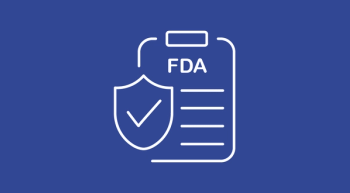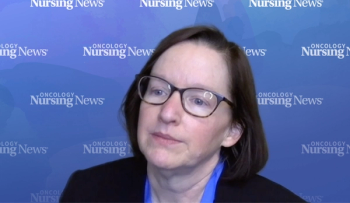
The FDA approved blinatumomab for patients 1 month or older with CD19-positive, Philadelphia chromosome–negative, B-cell precursor acute lymphoblastic leukemia.

The FDA approved blinatumomab for patients 1 month or older with CD19-positive, Philadelphia chromosome–negative, B-cell precursor acute lymphoblastic leukemia.

The FDA approved durvalumab plus carboplatin and paclitaxel, followed by single-agent durvalumab for primary advanced or recurrent dMMR endometrial cancer.

Patients with relapsed/refractory multiple myeloma who also had a lower tumor burden were more likely to derive deeper responses to idecabtagene vicleucel.

Findings from a retrospective study may shed light on the prognostic value of PD-L1 expression in metastatic papillary renal cell carcinoma.

Patient-provider conversations are vital to promote the best care for chronic myeloid leukemia, a patient advocate said.

The FDA granted accelerated approval to repotrectinib to treat adult and pediatric patients with NTRK gene fusion-positive solid tumors.

Compared with fulvestrant alone, abemaciclib plus fulvestrant improved progression-free survival in select patients with hormone receptor–positive/HER2-negative advanced breast cancer.

This traditional approval updates the accelerated approval that selpercatinib received in 2020 for this indication in patients 12 years and older.

Oncology nurses can help optimize quality of life in patients by addressing interrelated symptom clusters.

Patients with advanced renal cell carcinoma with previous exposure to lenvatinib derived modest benefit with tyrosine kinase inhibitors.

The priority review granted by the FDA to the supplemental new drug application for osimertinib is seeking approval for its treatment of stage III non-small cell lung cancer with EGFR mutations.

Adding darolutamide to androgen deprivation therapy and docetaxel delayed the progression from metastatic hormone-sensitive prostate cancer to metastatic castration-resistant disease.

Patients with HER2-positive early breast cancer derived similar outcomes whether they received subcutaneous or intravenous pertuzumab and trastuzumab plus chemo.

Patients treated with enfortumab vedotin before sacituzumab govitecan had low objective response rates and median PFS, which may raise questions about this sequencing approach.

Rates of MRD negativity increased with daratumumab plus VRd in newly diagnosed, transplant-eligible multiple myeloma.

Treatment with fuzuloparib, either with or without apatinib, provided superior progression-free survival benefit compared with chemotherapy in HER2– metastatic breast cancer with germline BRCA1/2 mutations.

Oral azacitidine had a similar safety profile across the 200-mg and 300-mg groups in lower- to intermediate-risk MDS.

Patients with biochemically recurrent nonmetastatic hormone-sensitive prostate cancer who are responding well to an enzalutamide regimen may be able to stop treatment with an impact to their quality of life.

The FDA granted an approval to imetelstat for certain patients with low- to intermediate-1-risk MDS who have transfusion-dependent anemia.

Patients with recurrent ovarian cancer did not derive a benefit from adding atezolizumab to chemotherapy and bevacizumab.

Tucidinostat plus R-CHOP was safe and effective for previously untreated diffuse large B-cell lymphoma expressing MYC and BCL-2.

Oncology nurses can aid in the identification and management of oral adverse effects from cancer therapies.

These data may support belantamab mafodotin, bortezomib, and dexamethasone as a new standard of care for patients with relapsed/refractory multiple myeloma.

An apalutamide-based androgen blockade regimen may improve PSA progression-free survival without a negative impact on quality of life in patients with recurrent prostate cancer.

Findings from this safety run-in cohort of teclistamab, daratumumab, and lenalidomide in newly diagnosed multiple myeloma will steer how randomization of the MajesTEC-7 trial will commence.

Adding inavolisib to palbociclib and fulvestrant improved results for HER2-negative, hormone receptor–positive, PIK3CA-mutated advanced or metastatic breast cancer.

Adagrasib, compared with standard-of-care chemotherapy, significantly improved tumor responses and progression-free survival in patients with KRASG12C-mutated locally advanced or metastatic NSCLC.

Talquetamab treatment was safe and efficacious for patients with relapsed or refractory multiple myeloma, including those with comorbidities and poor functional status.

Patients with MammaPrint high-2–risk, BluePrint Luminal B, HR-positive, HER2-negative breast cancer had improved recurrence-free survival when treated with anthracycline/taxane/cyclophosphamide.

Patients with HR-positive, HER2-low, and -ultralow metastatic breast cancer treated with trastuzumab deruxtecan obtained a PFS benefit vs chemotherapy.